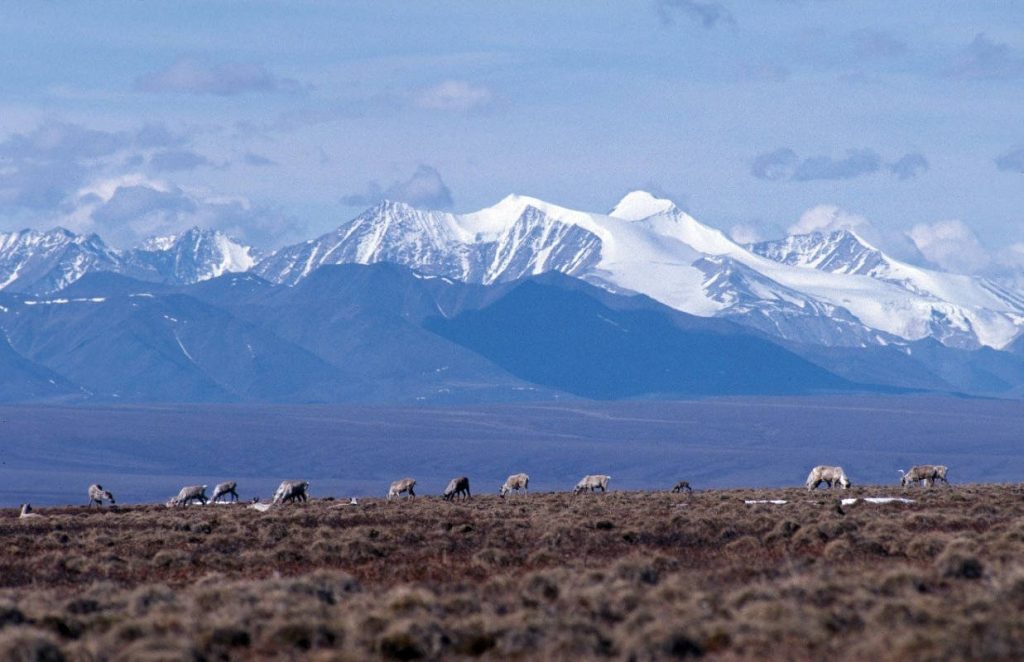The fight over drilling in Alaska’s Arctic refuge includes some new twists — but few new ideas
Despite the Trump administration's push to speed the oil and gas leasing in Arctic National Wildlife Refuge, there's likely to be a long fight before the issue's settled.

Hours of public testimony in four meetings across Alaska about oil drilling in the Arctic National Wildlife Refuge in late May featured deeply held beliefs — but little in the way of new arguments pro or con.
It was not at all surprising that the dozens of people who spoke in Arctic Village, Fairbanks, Anchorage and Utqiagvik in late May raised issues that have been heard many times before.
It was also not surprising that the opinions on all sides are strongly held. The coastal plain of the refuge is either the ideal spot to look for an oil bonanza in Alaska or the “sacred place where life begins” that must be left as it is.
The competing philosophical claims on this issue have been more or less the same for decades, but ANWR drilling remains one of the most contentious environmental and development questions facing Alaska.
Even with Congressional approval of an amendment to the federal tax bill in late 2017 to approve oil exploration, many people are more focused on whether to allow drilling, than on conditions under which it would take place.
In other words, the fight is far from finished.
The Bureau of Land Management conducted four so-called “public scoping meetings” to gather comments on development of an Environmental Impact Statement. The remaining meetings are set for the Arctic Slope village of Kaktovik and the village of Venetie June 12 and Washington, D.C. on June 15.
On one side, supporters of drilling said the jobs and revenue oil development could create make it important to push ahead. It can be done with minimal impact on the environment, they said.
On the other side, opponents said that the environmental damage would exceed the benefits and that the caribou and other wildlife face grave threats.
The Fairbanks hearing, which was five hours long, ended with 35 people saying they did not get a chance to testify and wanted a chance to be heard.
By any measure, ANWR drilling has been placed on the fast track by the Trump administration. Many opponents of drilling who testified argued for more hearings and more time to consider the impact of drilling.
The longer it is delayed, the greater the chance that political power will shift in Washington, D.C. and opponents will gain an upper hand.
The notion that the political clock is ticking — because of Congressional elections and the uncertainties of the Trump administration — is not lost on drilling supporters either, which is why they want a lease sale as soon as possible. The quicker it gets done, the harder it will be to stop.
Whether the process will speed up or slow down may well be based on how the courts handle the legal challenges expected once the Interior Department produces official reports on a proposed lease.
The Trump administration wants to complete an impact statement and to conduct a lease sale in the spring or summer of 2019.
On a separate, but parallel track, two Alaska Native corporations and an oilfield services company are seeking approval to conduct seismic work in the refuge next winter.
Advanced seismic work is a key step in gaining more information about where the best oil prospects might be found.
Without that information, oil companies will be asked to bid on lease tracts with limited geological data, which would hold down the amounts they decide to risk.
The Washington Post reported that the U.S. Fish and Wildlife Service found the plan inadequate and cited a lack of research about impacts on wildlife and conditions in the refuge.
This may set up a situation where the Interior Secretary Ryan Zinke will override those objections to keep the process moving fast.
But the internal objections about the lack of preparation and the research that has not taken place could create a powerful fodder for court challenges by environmental groups.
And key provisions that would have prevented long court challenges and given more authority to the Interior Secretary were absent from the ANWR authorization language placed in the tax bill.
Because the ANWR amendment was part of a bill that dealt with revenues, it could not include sections designed by the Alaska delegation in years past to put a 90-day time limit on court challenges and stipulate that decisions by the Interior Secretary “shall be presumed to be correct unless shown otherwise by clear and convincing evidence to the contrary.”
The consequences of proceeding without those stipulations will only be clear later this year when ANWR lawsuits are expected and the drilling battle shifts to the courts.
Dermot Cole can be reached at de*********@gm***.com.